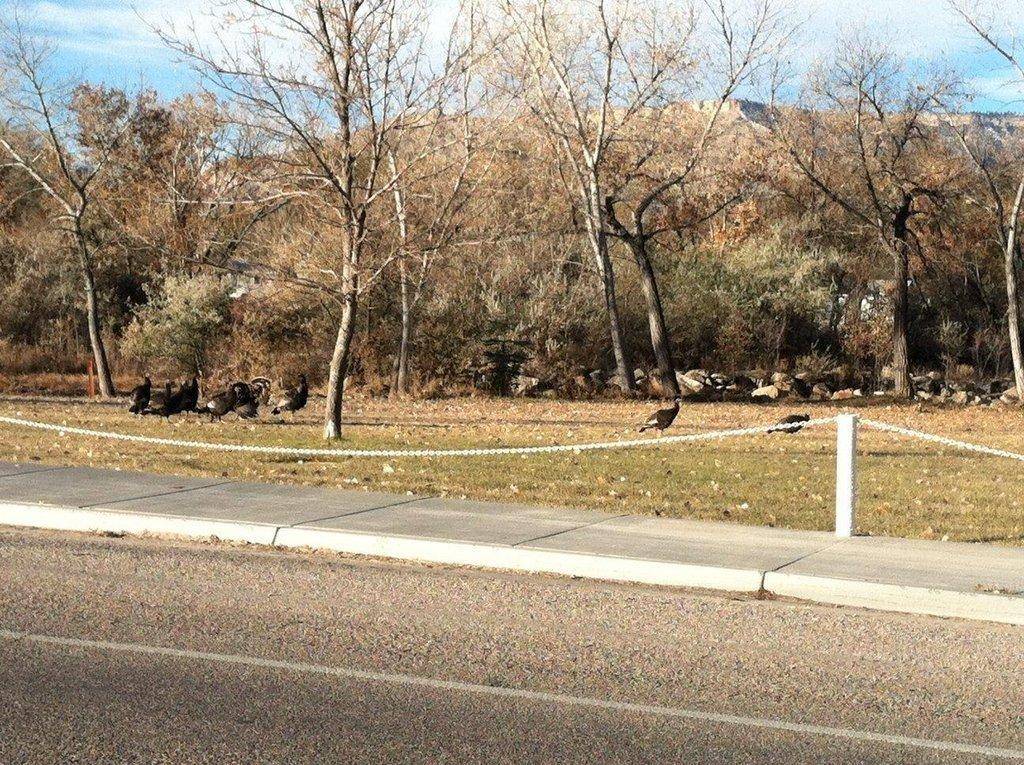The picture (left) was taken Friday afternoon and features dozens of wild turkeys walking the park at the intersection of Main Street and State Road 29.
According to a DWR press release, the birds were Rio Grande wild turkeys. The following paragraphs were taken from the press release:
The Rio Grande wild turkey or Rio, Meleagris gallopavo intermedia, is one of two subspecies of Utah’s largest game bird. The Rio is similar in size and appearance to the other subspecies of wild turkey. Adult males (gobblers or toms) weigh from 17 to 21 pounds. Adult females (hens) average 8 to 11 pounds. Rios can be distinguished from the other subspecies by the coloration of the tips of the tail feathers in the upper tail coverts (feathers of the lower back, covering the base of the tail feathers). In the Rio Grande bird, these feather tips are buff or tan, contrasting with the white tips of the Merriam’s subspecies. One year old male turkeys are called jakes and one year old female turkeys are called jennnies. Chicks are called poults.
The Rio Grande subspecies was introduced into Utah in 1984. It is native to the south-central plains states and northeastern Mexico. The Rio prefers cottonwood river bottoms associated with oak-pine and pinyon-juniper forests.
Courtship activities begin in early spring. The gobbling of the tom serves as a challenge to other males and attracts hens to his territory. Rio Grande turkeys select nest sites that have good concealing herbaceous or woody cover and water nearby. Hens lay a clutch of 10-12 eggs, which takes about two weeks. Continuous incubation takes about 26 days.
“Mast” plants such as pine nuts, juniper berries, and acorns are important foods sources. Turkeys also eat a variety of grasses, weed seeds, and green, leafy vegetation. Insects are extremely crucial in the diet of young poults in the summer.
Rios are found in a variety of areas throughout Utah from Box Elder County in the north to Utah county in Central Utah and San Juan and Iron counties in southern Utah. Numerous other sites throughout the state have been identified as suitable habitat for Rios. Trapping and transplant of birds from other states such as Kansas, Oklahoma, and Texas and relocation of birds within Utah will be the focus of management into the near future. Public interest in wild turkey management in Utah is skyrocketing and will continue into the future.

